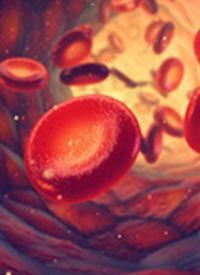Relapse Following CAR T-cell Therapy Linked to Poor OS in Relapsed/Refractory Myeloma
Relapse following treatment with BCMA-directed CAR T-cell therapy was associated with poor survival outcomes in patients with relapsed/refractory multiple myeloma.
Multiple Myeloma

Relapse following treatment with BCMA-directed CAR T-cell therapy was associated with poor survival outcomes in patients with relapsed/refractory multiple myeloma, according to findings from a single-center retrospective analysis presented at the 19th International Myeloma Society Annual Meeting.
After CAR T-cell therapy relapse, median overall survival (OS) was 14.8 months (95% CI, 10.3-23.4). The OS rate at 1 year was 57% (95% CI, 42.4%-75.3%) and 17% (95% CI, 6.7%-43.7%) at 2 years.
The median OS of patients who received salvage therapy with a BCMA CAR T-cell therapy or bispecific therapy within 6 months of progression on the initial BCMA CAR T-cell therapy was 18 months (95% CI, 11.8-not reached [NR]).
“Conventional treatments may elicit a response even with a prior history of refractoriness. However, duration of response appears limited,” said lead study author Kevin R. Reyes, a second-year medical student at the University of California San Francisco School of Medicine, when presenting the findings at the 2022 International Myeloma Society Annual Meeting and Exposition. “Subsequent BCMA-directed immunotherapies may be effective for these patients.”
Two BCMA-directed CAR T-cell therapies have been FDA approved for treatment in patients with RRMM thus far: idecabtagene vicleucel (ide-cel; Abecma) and ciltacabtagene autoleucel (cilta-cel; Carvykti). Although such therapies have resulted in significant clinical responses, most patients eventually experience disease progression. Investigators sought to determine the outcomes of patients with RRMM who relapse after BCMA-directed CAR T-cell therapy.
The analysis included all patients with RRMM who received any BCMA-directed CAR T-cell therapy, whether on a clinical trial or with an approved therapy (n = 78), between January 2017 and June 2022.
Efficacy outcomes for the analysis included progression-free survival (PFS) and OS of all patients, objective response rates (ORRs) for specific salvage therapies, the duration of therapy per line of salvage therapy, and OS from the time of progressive disease.
The median age of all patients was 64.5 years (range, 33-77). Most patients were male (59%), had IgG disease (65%), and high-risk fluorescence in situ hybridization (FISH; 59%). Nineteen-percent of patients had IgA disease, compared with 14% of patients with light chain only disease, and just 1% of patients with IgD disease. Extramedullary disease was present in 26% of patients and the median plasma cell burden prior to CAR T-cell infusion was 35% at baseline (range, 0%-100%).
The median number of prior lines of therapy was 7 (range, 1-14). All patients were previously exposed to lenalidomide (Revlimid), 91% to anti-CD38 therapies, 88% to bortezomib (Velcade), 86% to carfilzomib (Kyprolis) and cyclophosphamide, and 85% to pomalidomide (Pomalyst).
The majority of patients were refractory to anti-CD38 therapy (85%), followed by lenalidomide (79%), pomalidomide (71%), carfilzomib (69%), and bortezomib (45%). Sixty-four percent of patients were triple-refractory and 28% were penta-refractory. Seventeen-percent of patients were refractory to venetoclax (Venclexta), 12% to ixazomib (Ninlaro), 8% to elotuzumab (Empliciti), and 5% to panobinostat (Farydak).
Of all patients in the cohort, 57 received treatment on a clinical trial with a median dosing of 308 x 106 CAR T cells (range, 0.2-600 x 106).
Best response to CAR T-cell therapy was stringent complete response in 38%, complete response in 18%, very good partial response in 23%, partial response in 8%, stable disease in 11%, and progressive disease in 3% of patients. The median time to best response was 2.8 months (range, 0.2-17.7), and minimal residual disease negativity was achieved in 64% of patients.
At a median follow-up of 19 months, the median PFS to CAR T-cell therapy was 13 months (95% CI, 10.6-22.5) and median OS was 31.4 months (95% CI, 26.5-NR).
In an analysis of patients with 1q copy number gain, patients with 3 or more copies of 1q had a worse OS than those with only 2 copies (24.8 months vs NR). Among patients with high-risk FISH, as defined by Revised International Staging System for Multiple Myeloma (R-ISS) criteria, the median OS was NR compared with 31.4 months in those who did not have high-risk disease by FISH cytogenetics. However, Reyes noted that R-ISS currently does not classify 3 or more copies of 1q as high risk.
A total of 42 patients relapsed after CAR T-cell therapy and received a median of 3 salvage therapies after CAR T-cell therapy (range, 1-8). Salvage therapy with BCMA-directed CAR T-cell therapy (n = 8) resulted in an ORR of 75% and a median duration of treatment of 8.1 months, the highest among all salvage therapies.
With salvage therapy a BCMA bispecific (n = 5), the ORR was 60% and the median duration of treatment was 1.6 months. Anti-CD38 salvage therapy (n = 19) led to an ORR of 52.6% and a median duration of therapy of 3.0 months. Forty-one patients received salvage therapy with an alkylator, which resulted in an ORR of 46.3% and a median duration of treatment of 1.5 months.
In patients who were retreated with an agent they were previously exposed to or previously refractory to, the highest ORR was 73% among patients who received an alkylator (n = 15) followed by 64% with anti-CD38 therapy (n = 11), and 50% with an immunomodulatory agent (n = 2).
Reyes suggested that possible limitations of the study included the small sample size, the fact that it was a single-institution experience, the heterogeneous salvage therapy use, and the limited follow-up time.
“Novel therapies and further clinical studies are greatly needed for this patient population,” Reyes concluded.
Reference
Reyes KR, Liu YC, Huang CY, et al. Salvage Therapies and Clinical Outcomes After Relapse Following BCMA CAR-T in Patients with Relapsed/Refractory Multiple Myeloma. Presented at: 2022 International Myeloma Society Annual Meeting and Exposition; September 25-27, 2022; Los Angeles, CA. Abstract OAB-051.



